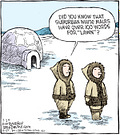Do you ever wonder where you draw the line between red and orange? Or whether another person’s distinction differs from yours?
You’ll find that a fellow native English speaker will likely separate the two at a similar point to you, while a native Sanskrit or Italian speaker may believe that what you describe as red is most definitely orange and are you sure you’re not colour blind?
The truth is that we dissect nature along the lines laid down by our native language (Whorf, 1940). Language filters our reality, determining how we perceive and organise the world around us; this is a concept known as linguistic relativity. We like to believe that the categories we see in the world–colours, time, morals–are staring us all in the face in exactly the same way. But the world is so complex that our minds are forced to organise everything around us into simplified subjective categories so we can begin to make sense of it.
Specifically, it’s our linguistic systems that enable us to segment continuous spectrums and label abstract concepts. This is why some cultures perceive colour in a different way to others or why people in certain parts of the world are seemingly more embodied than others. For example, a rough English translation of the Malay word “rasa” is “think-feel”. Malaysians don’t draw a clear distinction between thinking and feeling in the same way many Western cultures do. Instead, the sensations of thinking and feeling create a combined felt sense that is hard for e.g., native English speakers to understand or express. Now, this doesn’t mean that English speakers can’t express this sensation at all, simply that they have to undertake a process of circumlocution to articulate a similar concept. In doing so, it’s unlikely that their felt sense of “rasa” will be the same as a speaker of Malay.
One of my favourite examples of the impact of linguistic relativity on our everyday lives is our conception of time. Western cultures and languages view time as a linear spectrum that carries us through the present, away from the past, and into an unknown future. Our grammatical system underpins this fixed orientation to space and time. In contrast, the Hopi’s language, a Native American tribe in Arizona, has no present, past or future tense. Instead, they segment the world into “manifested” and “unmanifest” domains. The manifested domain deals with the physical universe, including the present, the immediate past and future. The unmanifest domain involves the remote past and the future, as well as the world of desires, thought, and life forces. Whorf concluded that the Hopi therefore view time in a completely different way to English speakers. While native English speakers view objects and situations as measurable, speakers of Hopi perceive the world as a continuous stream of events and processes.
Still more intriguing is the concept of time put forward in the film Arrival. Based on Ted Chiang’s award-winning short story Story Of Your Life, we see a celebrated linguist come into contact with a new alien species. She starts to learn their language, soon discovering that the extraterrestrial visitors are capable of seeing the future. The structure of the aliens’ language transforms her perception of time entirely, enabling her to experience simultaneous consciousness and “remember” the future, just like they can. The aliens’ function in this story is to show the reader how a completely different linguistic structure can entirely alter our relationship with something we all take for granted: time.
We like to think that we are completely in charge of our thoughts, but the reality is that we are largely unconscious of the intricate linguistic patterns that govern them. While language helps us draw lines in the sand, those lines inadvertently box us in, making it harder to expand our consciousness. If we truly want to expand our worldview, we must learn how another culture organises the world.


